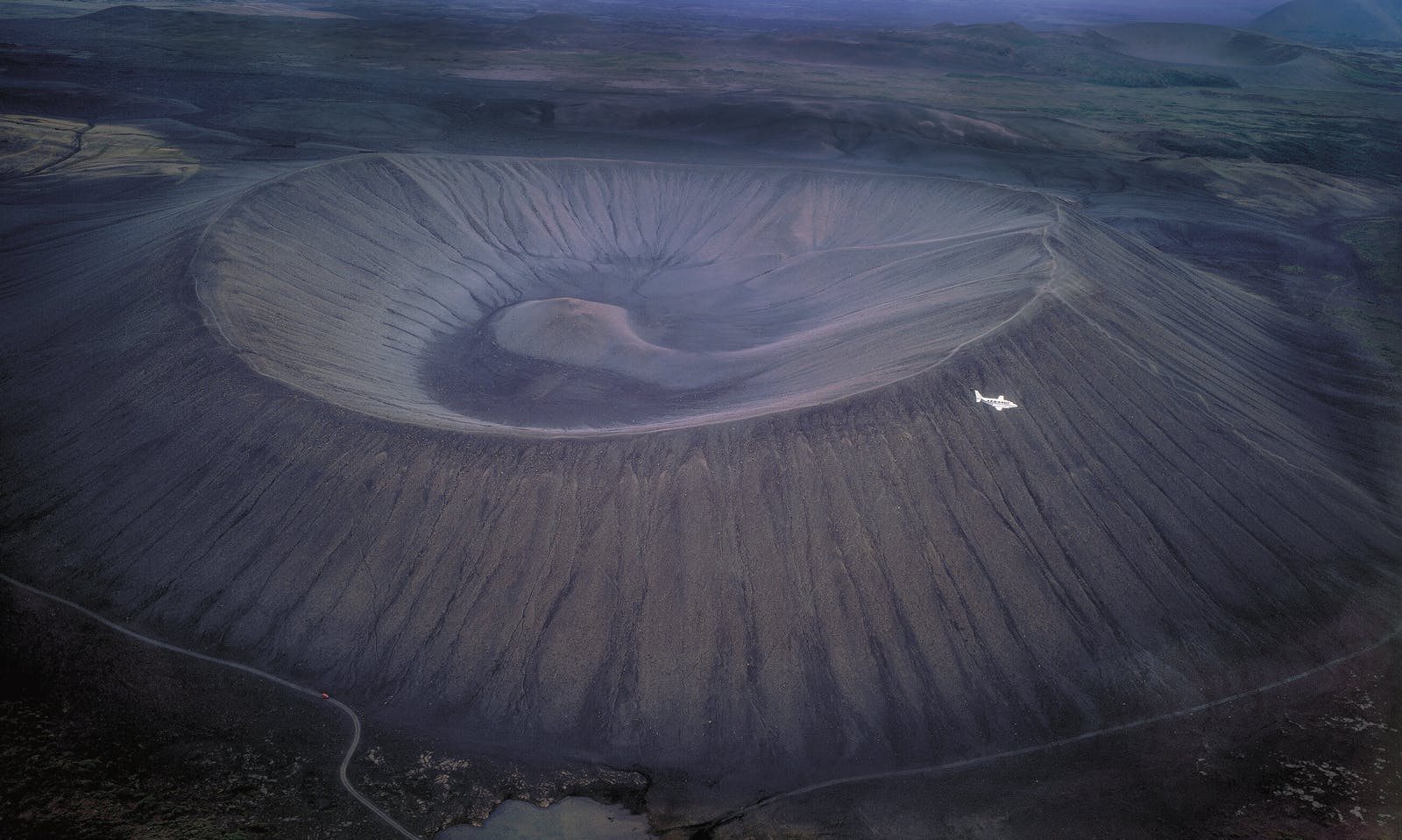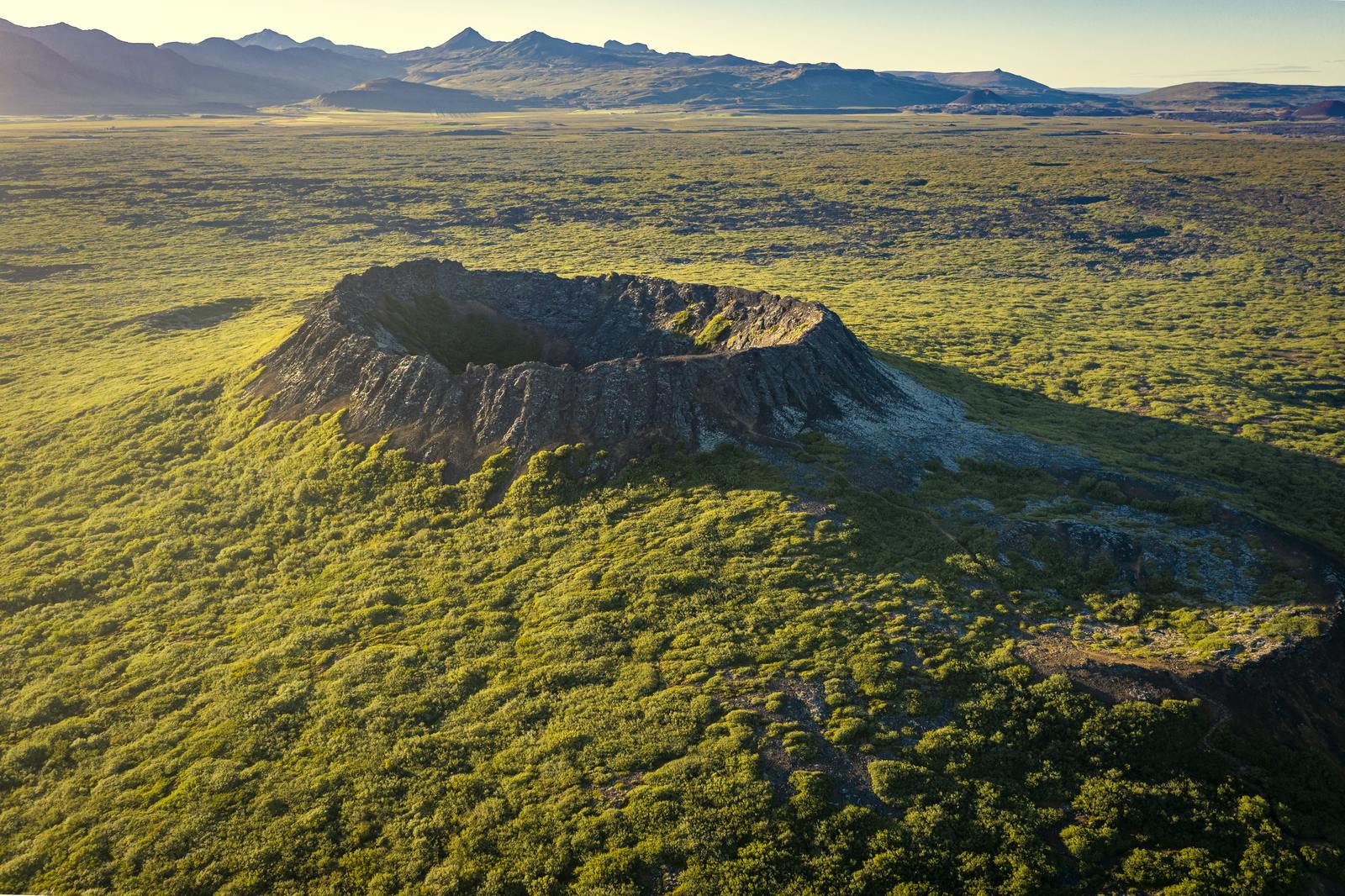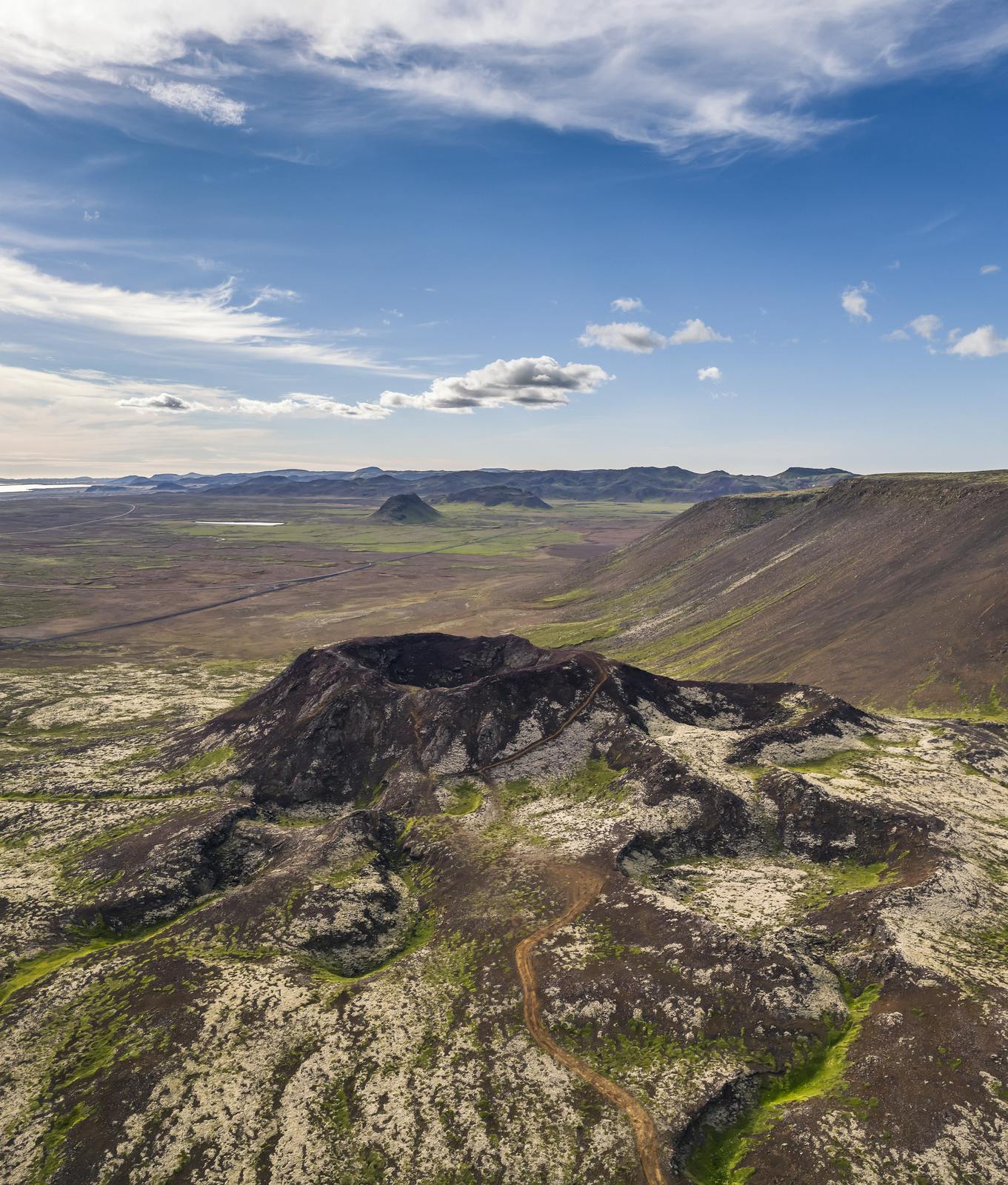
What are Cinder Cone Volcanoes?
Cinder cone volcanoes, also known as scoria cones or pyroclastic cones, are typically small, steep-sided volcanic cones built by the accumulation of volcanic debris ejected during moderately explosive eruptions. The volcanic material consists mainly of pyroclastic fragments such as volcanic ash, cinders, and volcanic scoria.
What are the Key Characteristics of Cinder Cone Volcanoes?
The explosive ejection of fragmented volcanic material generally characterises cinder cone eruptions. Cinder cones have steep sides, often reaching angles close to the angle of repose for loose material. The steepness results from the accumulation of ejected fragments near the vent. Also, they are typically smaller than other types of volcanoes, such as stratovolcanoes or shield volcanoes, as they usually range from ten to a few hundred metres in height.

Additionally, cinder cones may have a single central vent from which volcanic material is ejected during eruptions, but more often, they form a row of cones along an eruptive fissure, like Sundhnúkagígar Crater Row. The eruptions are often short-lived but can be relatively intense. Lastly, cinder cones may produce lava that flows from the base of the cone. The lava is often basaltic in composition.
What is an Example of a Cinder Cone Volcano?
Notable examples of cinder cone volcanoes include Parícutin in Mexico and Sunset Crater in the United States. Cinder cones are important features in volcanic landscapes, and their formation provides insights into the dynamics of volcanic eruptions and the behaviour of magma near the earth’s surface.
How are Cinder Cone Volcanoes Formed?
Cinder cone volcanoes are formed through a relatively moderate explosive volcanic activity that ejects fragmented volcanic material into the air. They are associated with explosive eruptions resulting from gas-rich magma release. The magma contains dissolved gases, such as water vapour and carbon dioxide.

As magma rises toward the surface, the decreasing pressure allows these gases to come out of solution and form bubbles. Also, the expansion of gas bubbles within the magma leads to the fragmentation of the molten rock into small, lightweight pyroclastic fragments.
Furthermore, during the eruption, the fragmented volcanic material is expelled forcefully into the air by the escaping gas pressure. The material is ejected from the central vent and falls back to the ground near the vent. The ejected material accumulates around the vent, forming a conical-shaped pile. The steep slopes of the cinder cone result from the material falling close to the vent due to its relatively high velocity during ejection.
Are Cinder Cone Volcanoes Dangerous?
Cinder cone volcanoes can be associated with relatively explosive eruptions, but their overall level of danger is generally lower compared to other types of volcanoes, such as stratovolcanoes. The primary hazards associated with cinder cone volcanoes include lava flows and pyroclastic materials being released.
Are there Cinder Cone Volcanoes in Iceland?
Cinder cone volcanoes are common in Iceland. A good example is Grábrók volcano, close to the Ring road in Borgarfjörður, western Iceland. In Icelandic, a common name for a cinder cone is Eldborg. The most famous one is Eldborg, a prominent cone-shaped crater in Hnappadalur, West Iceland.

Learn About Volcanoes at Perlan in Reykjavík
Perlan’s Forces of Nature exhibition allows guests to feel the immense power of volcanoes, earthquakes, and geothermal energy that powers the island. In the heart of Reykjavík, guests can learn about the volcanoes that form when heat and pressure build up beneath the earth’s surface. The earth’s weak points tend to be along fault lines where tectonic plates converge or diverge, as in Iceland’s case. The exhibition is a unique, family-friendly museum experience that entertains and informs.
Iceland is home to numerous volcanic systems, many of which have shown increased activity in recent years. Learn more about active volcanoes in Iceland and how they shape the country’s dynamic landscape.

FAQ
Why are cinder cone volcanoes explosive?
Cinder cone volcanoes are considered explosive due to the nature of the volcanic eruptions that form them. The explosiveness is primarily attributed to the type of magma involved and the rapid release of gas during the eruption. The key factors contributing to the explosiveness of cinder cone eruptions include the presence of gas-rich magma, rapid gas expansion, and the ejection of pyroclastic materials, including ash and volcanic rocks. The eruptions are often short-lived but can be relatively intense. The explosive nature of these eruptions results in the rapid accumulation of pyroclastic material around the vent, creating the steep-sided cone shape.
What are two examples of cinder volcanoes
Two examples of cinder cone volcanoes are Parícutin in Mexico and Sunset Crater in Arizona, USA.
How can we classify a cinder cone volcano?
A cinder cone volcano is classified as a small, steeply sloped volcano formed from ash, cinders, scoria and rock fragments ejected during explosive eruptions, characterised by their simple structure and short-lived eruptions.







